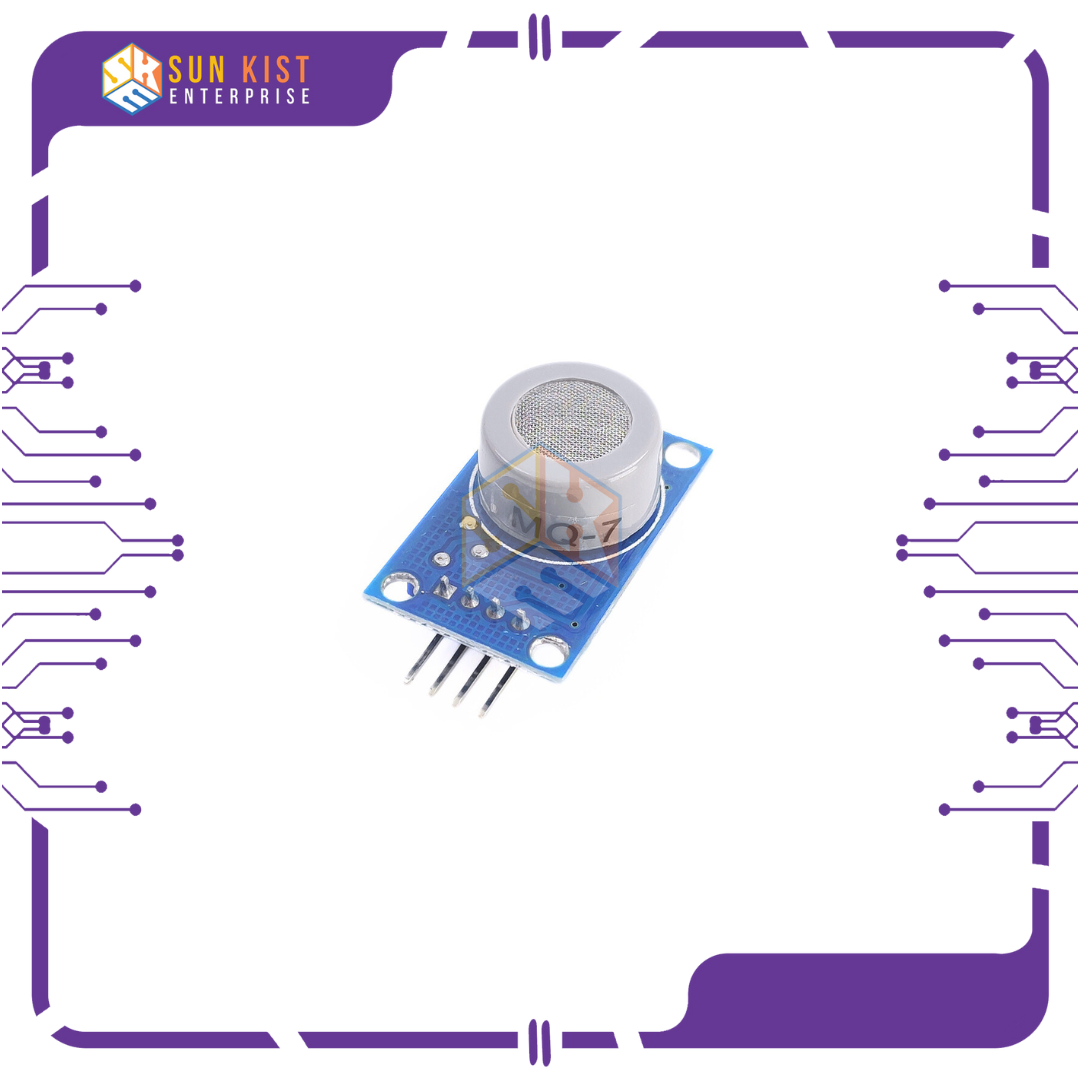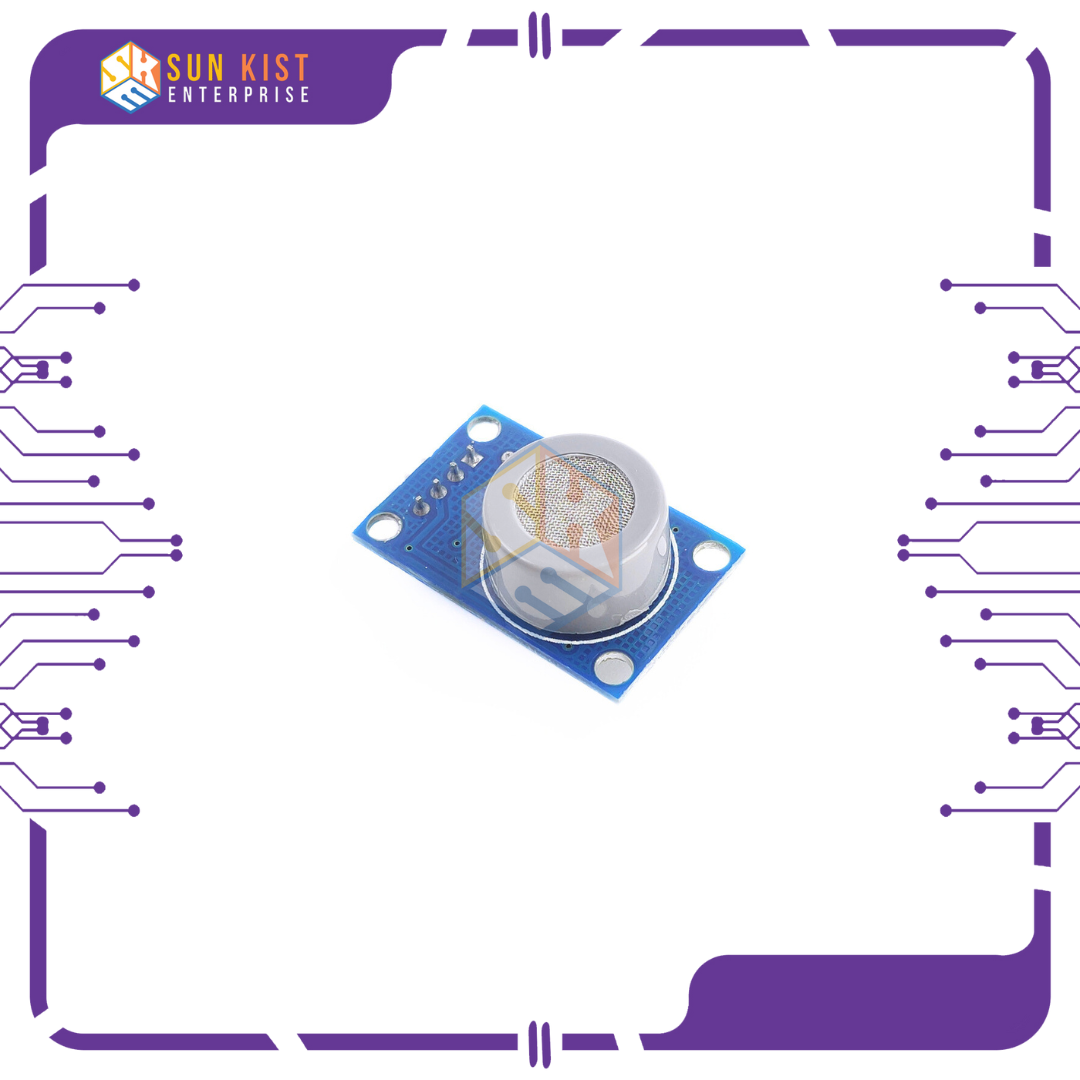Description
The MQ-7 is a gas sensor module designed to detect the presence of carbon monoxide (CO) in the air. It’s part of the MQ series gas sensors, which are widely used for monitoring various gases in different applications. Here are some key features and information about the MQ-7 Carbon Monoxide Sensor:
1. **Detection Gas:** Carbon Monoxide (CO)
2. **Principle of Operation:** The MQ-7 sensor module operates based on the principle of a tin dioxide (SnO2) semiconductor. The electrical resistance of the sensor changes in the presence of CO gas, leading to a change in voltage across the sensor. This change can be measured and used to detect the concentration of CO in the air.
3. **Operating Voltage:** The typical operating voltage for the MQ-7 sensor is in the range of 5V.
4. **Heating Element:** The sensor has a built-in heating element that is used to heat the tin dioxide semiconductor to a specific temperature for proper operation.
5. **Analog Output:** The sensor provides an analog voltage output that can be read by a microcontroller or an analog-to-digital converter (ADC). The voltage level is proportional to the concentration of CO in the air.
6. **Digital Output (Optional):** Some modules may include a digital output pin that provides a binary signal (high or low) based on a predefined threshold concentration of CO.
7. **Preheat Time:** The sensor requires a preheat time after being powered on before it stabilizes and provides accurate readings. This time is typically a few minutes.
8. **Calibration:** Calibration may be necessary to ensure accurate readings, and the sensor’s sensitivity can be affected by environmental factors.
9. **Applications:** The MQ-7 sensor is commonly used in applications where monitoring and early detection of carbon monoxide are critical, such as in gas detectors, industrial safety systems, and environmental monitoring.
When using the MQ-7 sensor, it’s important to refer to the datasheet and documentation provided by the sensor’s manufacturer for specific details, calibration procedures, and usage guidelines. Additionally, consider the environmental conditions and other factors that may influence the sensor’s performance.










